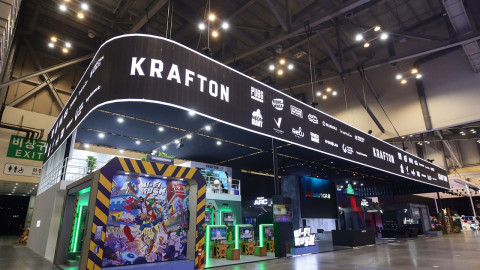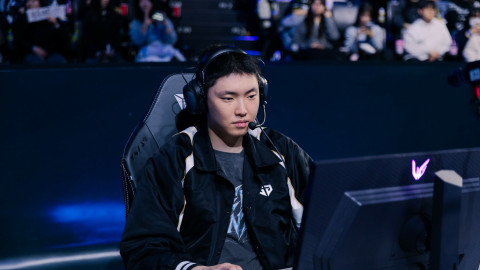
Wolfenstein: The New Order took just about everyone by surprise when it released in 2014. A partial reboot of the long-running Nazi-killing shooter franchise, the game ditched the supernatural elements found throughout the previous two games in favor of an alternate-history story filled with advanced technology and a depressing “what if” scenario. The Germans winning World War II didn’t slow down BJ Blazkowicz, and developer MachineGames’ ability to seamlessly blend absurd violence with a touching, emotional story was far removed from the in-your-face machismo of Wolfenstein 3D. The studio went even further down this path with the sequel Wolfenstein II: The New Colossus, and though the game does keep a few of its predecessor’s bad habits, it’s a tremendous first-person shooter that simply can’t be missed.
Taking place about five months after the events of The New Order, Wolfenstein II: The New Colossus finds BJ Blazkowicz completely broken, lacking working legs and quickly losing the will to continue fighting due to a horrific injury. The Nazis have taken over the United States, sending the nation into full-fledged fascist rule spearheaded by the sadistic General Irene Engel, who returns from The New Order.
Though he has access to a super-powered suit of armor which grants him the ability to fight as he previously did, damage to his internal organs has Blazkowicz fading quickly, and the death of a familiar ally early on plunges him into a depression – he’s still the badass, enormous BJ Blazkowicz we’ve seen before, but for the first time, he is questioning whether or not he can win the war, and must rely on his allies more frequently as he works to liberate America. BJ is joined in his mission by several returning characters, including his lover Anya, the Jewish scientist Set Roth, and gentle giant Max Hass, as well as several resistance members waging their own wars against the Nazi occupiers.

Every decision and action made in The New Colossus has a real sense of weight because of how well-realized these characters are. They feel like real people, and their growth over the course of the game is both entertaining and heartwarming. One newcomer’s struggle with her controversial past brought her into direct conflict with another character, and instead of using this as a cheap trick to facilitate a showdown between the two, MachineGames instead let it become a moment of growth for both of them.
As was the case in The New Order, Wolfenstein II takes a little bit of time to find its footing, with early missions tasking BJ and company with the recruitment of powerful anti-fascist leaders across the United States. They’re not as engaging as the wackier missions you’ll play further down the line, but they do help to develop Blazkowicz as a richer, more mature character. We’re introduced to his parents early on and learn that BJ is Jewish on his mother’s side – a revelation that further motivates him to fight the Nazis while also leaving him deeply hurt due to his anti-Semitic father. It’s a decision that seems to be a direct response to critics (including me) who wanted less ambiguous information on BJ’s ethnicity, and it helps to make his continued inner monologue seem like less of an affectation. With Engel’s evil on full display at several points throughout the story it helps to make us hate her even more than we already did.

Once The New Colossus hits its stride, it delivers a mix of stealth and intense first-person action that’s simply without peer. Missions take Blazkowicz into an irradiated New York City – devastated years earlier by a nuclear bomb that ended the war – as well as a New Orleans ghetto and one location even more ridiculous than The New Order’s lunar base. Regardless of where you’re slaughtering Nazi pigs, the basic structure remains the same. As you sneak your way through patrolling troops and take them out with silenced shots and blows from your hatchet, you’ll locate commanders who must be eliminated in order to avoid putting all troops on high alert. Make a mistake and you’ll have to break out the big guns as you blast your way through waves of Nazis.
The total number of guns has actually been reduced compared to The New Order, but those at your disposal are still just as effective, and upgrades allow you to customize them to fit your particular style. Initial missions are a little more frustrating than those later in the game because you don’t yet have access to the glorious shotgun with ricocheting ammunition, but once you do, the power trip we’ve come to expect from Wolfenstein is in full effect.
That isn’t to say, however, that Wolfenstein becomes an easy game: far from it. With an increase in BJ’s power comes an increase in the Nazis’, with heavily armored soldiers, dogs, and enormous mechanical giants often standing between our bullets and commanders’ heads. Taking more than a few hits will send BJ to an early grave, even if both your health and armor are fully replenished, and you have to make use of cover and environmental hazards in order to quickly take down packs of enemies, all while switching between your entire arsenal of guns. It’s chaotic, and it gets frustrating at a few key points later in the game, but the level of challenge only underscores the importance of BJ’s mission, and it makes the over-the-top violence even more satisfying.

Still, it’s during Wolfenstein’s quiet moments where the game truly left me speechless. Two moments taking place about an hour apart from each other in the campaign helped to solidify the game’s grisly tone while also revealing to players the extent to which its alternate-history technology can be used and exploited, and they left me with my jaw firmly on the floor. Even as I marched through waves of fascists on a fire-breathing mechanical dog and turned countless soldiers into a fine red mist, I couldn’t wait for MachineGames’ next chance to subvert my expectations, and in the moments where I felt the story was about to jump the shark, if that’s even possible, it always pulled back the reigns just enough to keep me engaged. After the credits rolled, my mind began racing as I considered where the (presumed) final installment could take the story, in large part due to the appearance of a certain real-world historical figure during one of the game’s best missions.
One issue did permeate much of The New Colossus’ story, however, and it worked to undermine the tension in some of its best scenes. When shifting from gameplay to scripted narrative moments, the game moves to pre-rendered cutscenes instead of its engine. This wouldn’t be a problem except for a substantial freeze that occurs whenever this switch is made, and the first time it occurred, I thought the game was about to crash. Though it didn’t completely ruin any of the scenes in which it occurred, the momentary break in momentum was quite obvious, and one of these breaks unfortunately happened at the very end of the game. It’s a problem that seems unique to The New Colossus, as its predecessor relied much more on in-engine cinematics, and with the sequel foregoing the older Xbox 360 and PlayStation 3, it seems odd that MachineGames didn’t lean even more in this direction.

Once you’ve completed the main story in The New Colossus, you don’t have to say goodbye. Several side missions, the majority of which focus on assassinating high-ranking Nazi officials, are available at each of the game’s main locations, and they help to make these feel like real areas rather than ones that only existed for the purpose of the story. When BJ first goes to New York City, for instance, his armor prevents him from needing a gas mask, but he must quickly find one to stay alive if he ventures back there later on.
None of these missions are required to get the full Wolfenstein II story, but for those interested in spending more time in its world or fleshing out its fiction, they’re are a great addition. BJ can also interact with the game’s supporting cast as he wanders around his group’s U-Boat command center, with dialogue triggering if he happens to get close enough, and you can listen in on conversations between other crew members, as well. A few missions even take place entirely on the boat, and in my timeline, once of these made for a heartbreaking and philosophical moment that should hit especially close to home for anyone familiar with The New Order’s characters.
Wolfenstein II: The New Colossus came along just when we needed it. Its commitment to linear storytelling in an age of “games as a service” is admirable, and its mix of cathartic philosophical musings and ridiculous action remains just as unique as it was in 2014. MachineGames has created a sequel that, even with heightened expectations, managed to consistently impress me, and as the holiday game rush goes into full effect, I still can’t stop thinking about replaying the whole thing – and not just because I’ll get to kill a whole load of Nazis again.

Sort by:
Comments :0






